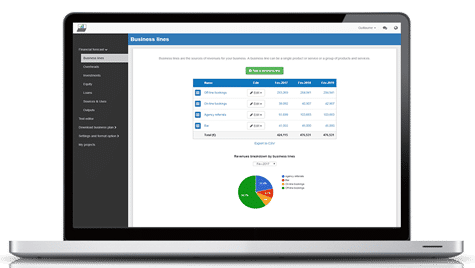How to create a financial forecast for a flea market?
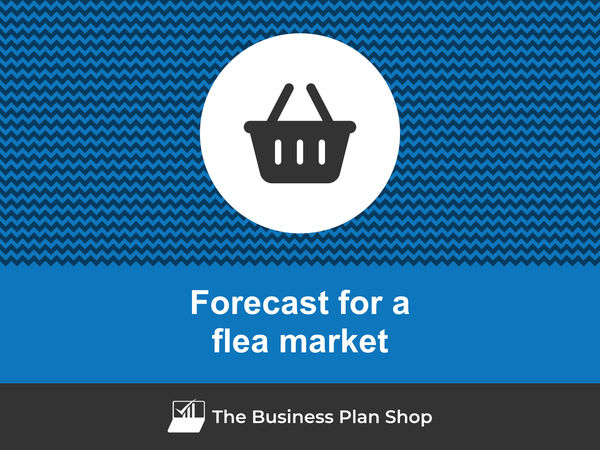
Creating a financial forecast for your flea market, and ensuring it stays up to date, is the only way to maintain visibility on future cash flows.
This might sound complex, but with the right guidance and tools, creating an accurate financial forecast for your flea market is not that hard.
In this guide, we'll cover everything from the main goal of a financial projection, the data you need as input, to the tables that compose it, and the tools that can help you build a forecast efficiently.
Without further ado, let us begin!
Why create and maintain a financial forecast for a flea market?
The financial projections for your flea market act as a financial blueprint to guide its growth with confidence and ensure its long-term financial viability.
To create them, you will need to look at your business in detail - from sales to operating costs and investments - to assess how much profit it can generate in the years to come and what will be the associated cash flows.
During challenging market conditions, maintaining an up-to-date financial forecast enables early detection of potential financial shortfalls, allowing for timely adjustments or securing financing before facing a cash crisis.
Your flea market's financial forecast will also prove invaluable when seeking financing. Banks and investors will undoubtedly request a thorough examination of your financial figures, making precision and presentation essential.
Need a solid financial forecast?
The Business Plan Shop does the maths for you. Simply enter your revenues, costs and investments. Click save and our online tool builds a three-way forecast for you instantly.
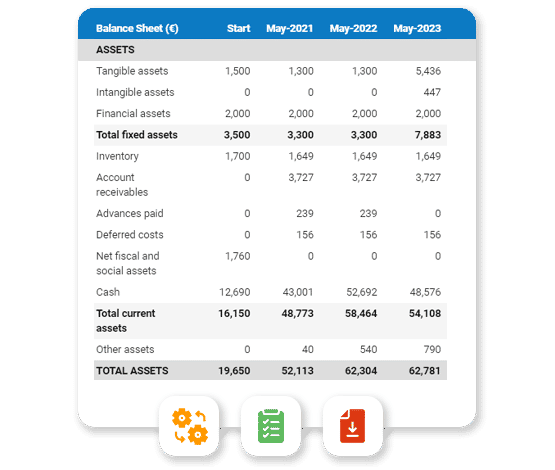
What information is needed to build a flea market financial forecast?
The quality of your inputs is key when it comes to financial modelling: no matter how good the model is, if your inputs are off, so will the forecast.
If you are building a financial plan to start a flea market, you will need to have done your market research and have a clear picture of your sales and marketing strategies so that you can project revenues with confidence.
You will also need to have a clear idea of what resources will be required to operate the flea market on a daily basis, and to have done your research with regard to the equipment needed to launch your venture (see further down this guide).
If you are creating a financial forecast of an existing flea market, things are usually simpler as you will be able to use your historical accounting data as a budgeting base, and complement that with your team’s view on what lies ahead for the years to come.
Let's now zoom in on what will go in your flea market's financial forecast.
The sales forecast for a flea market
The sales forecast, also called topline projection, is normally where you will start when building your flea market financial forecast.
Creating a coherent sales projection boils down to estimating two key drivers:
- The average price
- The number of monthly transactions
To do this, you will need to rely on historical data (for an existing business), market research data (for both new and existing flea markets), and consider the elements below:
- Seasonality: As a flea market owner, you may experience fluctuations in average price and monthly transactions due to seasonal changes. For example, during the summer months, you may see an increase in both metrics as more people are out and about and looking for bargains. On the other hand, during the winter months, you may see a decrease in both metrics as fewer people are willing to brave the cold weather to visit your market.
- Competition: Your average price and monthly transactions may be affected by the level of competition in your area. If there are other flea markets or similar types of markets in the vicinity, you may see a decrease in both metrics as customers have more options to choose from. On the other hand, if you are the only flea market in the area, you may see an increase in both metrics as customers have limited options for bargain shopping.
- Tourism: If your flea market is located in a popular tourist destination, you may see fluctuations in average price and monthly transactions based on the tourist season. During peak tourist season, you may see an increase in both metrics as more tourists are looking for unique souvenirs and bargains. However, during the off-season, you may see a decrease in both metrics as there are fewer tourists in the area.
- Local Events: Your average price and monthly transactions may be influenced by local events such as festivals, fairs, and concerts. If your flea market is located near these events, you may see an increase in both metrics as attendees may stop by your market before or after the event. On the other hand, if these events are not in close proximity to your market, you may see a decrease in both metrics as potential customers may choose to attend the event instead of visiting your market.
- Economy: The overall state of the economy can also impact your average price and monthly transactions. During times of economic downturn, people may be more budget-conscious and seek out bargains at flea markets. This could lead to an increase in both metrics. On the other hand, during times of economic prosperity, people may have more disposable income and may be less likely to visit flea markets, resulting in a decrease in both metrics.
After the sales forecast comes the operating expenses budget, which we will now look into in more detail.
Need inspiration for your business plan?
The Business Plan Shop has dozens of business plan templates that you can use to get a clear idea of what a complete business plan looks like.

The operating expenses for a flea market
Once you know what level of sales you can expect, you can start budgeting the expenses required to operate your flea market on a daily basis.
Expenses normally vary based on how much revenue you anticipate (which is why, from experience, it is always better to start your forecast with the topline projection), and where your business is based.
Operating expenses for a flea market will include some of the following items:
- Staff Costs: This includes wages, salaries, and benefits for all employees working at the flea market, including cashiers, maintenance workers, and security personnel.
- Accountancy Fees: You may need to hire an accountant to help you with bookkeeping, tax preparation, and financial reporting for your flea market business.
- Insurance Costs: You will need to purchase insurance to cover liabilities, such as accidents or injuries, as well as to protect your inventory and equipment.
- Software Licences: In order to efficiently manage your flea market operations, you may need to purchase software licences for point-of-sale systems, inventory management, and accounting software.
- Banking Fees: You will incur fees for processing credit card transactions, depositing cash, and other banking services.
- Rent/Lease Payments: If you do not own the property where your flea market is located, you will need to pay rent or lease payments to the landlord.
- Utilities: This includes electricity, water, and gas bills for operating your flea market space.
- Marketing and Advertising: You will need to budget for marketing and advertising expenses, such as flyers, social media ads, and event promotions, to attract customers to your flea market.
- Security Services: To ensure the safety of your customers and vendors, you may need to hire security services or install security systems at your flea market.
- Cleaning and Maintenance: Regular cleaning and maintenance of your flea market space is necessary to keep it safe and attractive for customers.
- Permits and Licences: You may need to obtain permits and licences from local authorities to operate your flea market business.
- Supplies and Inventory: You will need to purchase supplies, such as bags, price tags, and display racks, as well as inventory for your flea market, such as merchandise and products from vendors.
- Legal and Professional Fees: You may need to seek legal advice or hire a lawyer for contracts, business structure, or any other legal matters related to your flea market.
- Credit Card Processing Fees: When customers pay with credit or debit cards, you will incur processing fees from the credit card companies.
- Taxes: As a business owner, you are responsible for paying income taxes and other applicable taxes on your flea market profits.
This list will need to be tailored to the specificities of your flea market, but should offer a good starting point for your budget.
What investments are needed to start or grow a flea market?
Your flea market financial forecast will also need to include the capital expenditures (aka investments in plain English) and initial working capital items required for the creation or development of your business.
For a flea market, these could include:
- Rent/Lease Payments: This includes the cost of renting or leasing the space where the flea market will be held. This could also include any additional fees for utilities or maintenance of the space.
- Vendor Booths/Tables: In order to have a successful flea market, you will need to provide vendors with a space to sell their goods. This could include purchasing or renting tables, tents, or other display equipment.
- Security Equipment: It is important to ensure the safety and security of both vendors and customers at the flea market. This may require investing in security cameras, alarms, or hiring security personnel.
- Storage Units: Depending on the size and scale of the flea market, you may need to invest in storage units to keep excess inventory or equipment when not in use.
- Advertising/Marketing Materials: While not considered an operating expense, investing in advertising and marketing materials such as flyers, banners, and social media promotions can be crucial in attracting customers to the flea market.
Again, this list will need to be adjusted according to the size and ambitions of your flea market.
Need a convincing business plan?
The Business Plan Shop makes it easy to create a financial forecast to assess the potential profitability of your projects, and write a business plan that’ll wow investors.
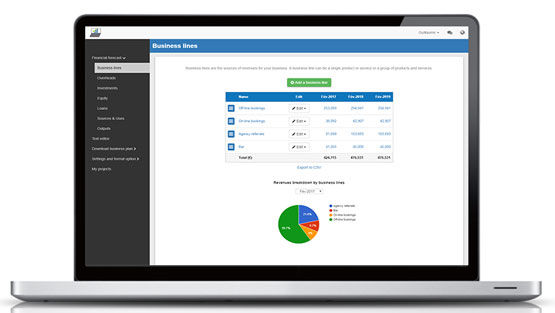
The financing plan of your flea market
The next step in the creation of your financial forecast for your flea market is to think about how you might finance your business.
You will have to assess how much capital will come from shareholders (equity) and how much can be secured through banks.
Bank loans will have to be modelled so that you can separate the interest expenses from the repayments of principal, and include all this data in your forecast.
Issuing share capital and obtaining a bank loan are two of the most common ways that entrepreneurs finance their businesses.
What tables compose the financial plan for a flea market?
Now let's have a look at the main output tables of your flea market's financial forecast.
The projected profit & loss statement
The projected profit & loss shows how profitable your flea market is likely to be in the years to come.

For your flea market to be financially viable, your projected P&L should ideally show:
- Sales growing above inflation (the higher the better)
- Profit margins which are stable or expanding (the higher the better)
- A net profit at the end of each financial year (the higher the better)
This is for established flea markets, there is some leniency for startups which will have numbers that will look a bit different than existing businesses.
The projected balance sheet
Your flea market's projected balance sheet provides a snapshot of your business’s financial position at year-end.
It is composed of three types of elements: assets, liabilities and equity:
- Assets: represent what the business possesses including cash, equipment, and accounts receivable (money owed by clients).
- Liabilities: represent funds advanced to the business by lenders and other creditors. They include accounts payable (money owed to suppliers), taxes payable and loans from banks and financial institutions.
- Equity: is the combination of what has been invested by the business owners and the cumulative profits and losses generated by the business to date (which are called retained earnings). Equity is a proxy for the value of the owner's stake in the business.

The cash flow forecast
Your flea market's cash flow forecast shows how much cash your business is expected to consume or generate in the years to come.
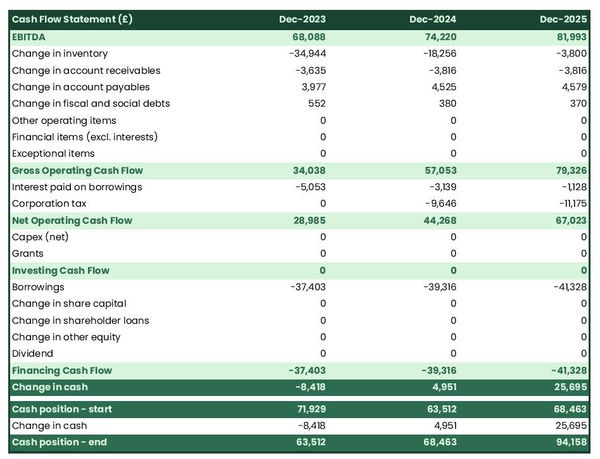
It is best practice to organise the cash flow forecast by nature to better explain where cash is used or generated by the flea market:
- Operating cash flow: shows how much cash is generated by the operating activities
- Investing cash flow: shows how much will be invested in capital expenditure to maintain or expand the business
- Financing cash flow: shows if the business is raising new capital or repaying financiers (debt repayment, dividends)
Keeping an eye on (and regularly updating) your flea market's cash flow forecast is key to ensuring that your business has sufficient liquidity to operate normally and to detect financing requirements as early as possible.
If you are trying to raise capital, you will normally be asked to provide a monthly cash flow forecast in your flea market's financial plan - so that banks or investors can assess seasonal variation and ensure your business is appropriately capitalised.
Need a solid financial forecast?
The Business Plan Shop does the maths for you. Simply enter your revenues, costs and investments. Click save and our online tool builds a three-way forecast for you instantly.

Which tool should you use to create your flea market's financial forecast?
Creating your flea market's financial forecast may sound fairly daunting, but the good news is that there are several ways to go about it.
Using online financial forecasting software to build your flea market's projections
The modern and easiest way is to use professional online financial forecasting software such as the one we offer at The Business Plan Shop.
There are several advantages to using specialised software:
- You can easily create your financial forecast by letting the software take care of the financial calculations for you without errors
- You have access to complete financial forecast templates
- You get a complete financial forecast ready to be sent to your bank or investors
- You can easily track your actual financial performance against your financial forecast, and recalibrate your forecast as the year goes by
- You can create scenarios to stress test your forecast's main assumptions
- You can easily update your forecast as time goes by to maintain visibility on future cash flows
- You have a friendly support team on standby to assist you when you are stuck
- It’s cost-efficient and much cheaper than using an accountant or consultant (see below)
If you are interested in this type of solution, you can try our forecasting software for free by signing up here.
Calling in a financial consultant or chartered accountant
Outsourcing the creation of your flea market financial forecast is another possible solution.
This will cost more than using software as you can expect as your price will have to cover the accountant’s time, software cost, and profit margin.
Price can vary greatly based on the complexity of your business. For a small business, from experience, a simple three-year financial forecast (including a balance sheet, income statement, and cash flow statement) will start at around £700 or $1,000.
Bear in mind that this is for forecasts produced at a single point in time, updating or tracking your forecast against actuals will cost extra.
If you decide to outsource your forecasting:
- Make sure the professional has direct experience in your industry and is able to challenge your assumptions constructively.
- Steer away from consultants using sectorial ratios to build their client’s financial forecasts (these projections are worthless for a small business).
Why not use a spreadsheet such as Excel or Google Sheets to build your flea market's financial forecast?
Creating an accurate and error-free flea market financial forecast on Excel (or any spreadsheet) is very technical and requires both a strong grasp of accounting principles and solid skills in financial modelling.
Most entrepreneurs lack the expertise required to create an accurate financial forecast using spreadsheet software like Excel or Google Sheets. As a result, it is unlikely anyone will trust your numbers.
The second reason is that it is inefficient. Building forecasts on spreadsheets was the only option in the 1990s and early 2000s, nowadays technology has advanced and software can do it much faster and much more accurately.
This is why professional forecasters all use software. With the rise of AI, software is also becoming smarter at helping us detect mistakes in our forecasts and helping us analyse the numbers to make better decisions.
Finally, like everything with spreadsheets, tracking actuals vs. forecasts and updating your forecast as the year progresses is manual, tedious, error-prone, and time-consuming. Whereas financial forecasting software like The Business Plan Shop is built for this.
Need a convincing business plan?
The Business Plan Shop makes it easy to create a financial forecast to assess the potential profitability of your projects, and write a business plan that’ll wow investors.

Use our financial projection templates for inspiration
The Business Plan Shop has dozens of financial forecasting templates available.
Our examples contain both the financial forecast, and a written business plan which presents, in detail, the company, the team, the strategy, and the medium-term objectives.
Whether you are just starting out or already have your own flea market, looking at our template is always a good way to get ideas on how to model financial items and what to write when creating a business plan to secure funding.

Takeaways
- A financial projection shows expected growth, profitability, and cash generation for your business over the next three to five years.
- Tracking actuals vs. forecast and keeping your financial forecast up-to-date is the only way to maintain visibility on future cash flows.
- Using financial forecasting software makes it easy to create and maintain up-to-date projections for your flea market.
You have reached the end of our guide. We hope you now have a better understanding of how to create a financial forecast for a flea market. Don't hesitate to contact our team if you have any questions or want to share your experience building forecasts!
Need inspiration for your business plan?
The Business Plan Shop has dozens of business plan templates that you can use to get a clear idea of what a complete business plan looks like.

Also on The Business Plan Shop
Know someone who runs or wants to start a flea market? Share our financial projection guide with them!

